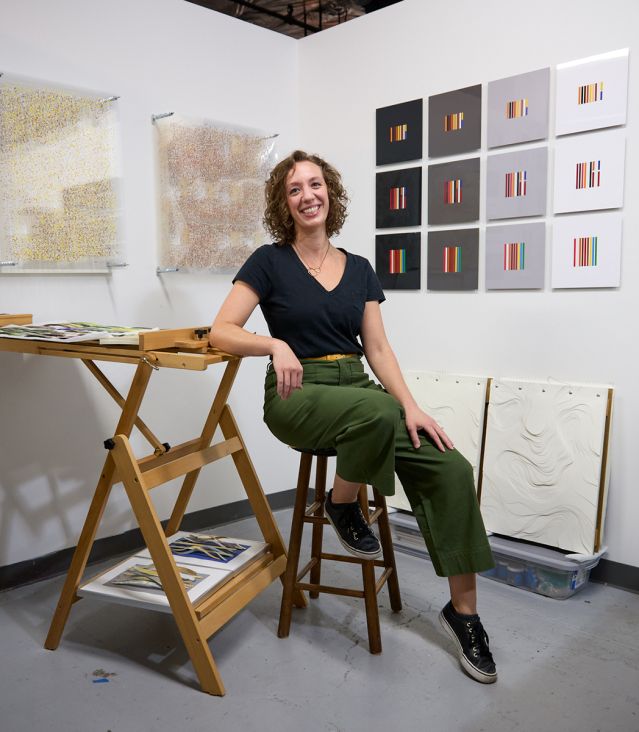The Language Of Color
Translating the experience of synesthesia into works of art.
By Abigail Fagan published January 3, 2023 - last reviewed on January 3, 2023

Lauren Alyssa Bierly’s mind is a colorful place. She’s a synesthete, so colors materialize as she reads, thinks, and meditates. She has long been drawn to the art world—as a child at art camp, a college student studying architecture, and a graduate student in modern art, connoisseurship, and history of the art market. In addition to her work in exhibition management—for the likes of the Costume Institute at The Metropolitan Museum of Art and the Brooklyn Museum—she is an interdisciplinary artist who explores color, language, and sensory experience in her work. Her series Color Translation, for example, depicts some of her favorite essays in color.
How did you capture your experience of synesthesia to help others understand it?
I was in freshman year of college before I realized that synesthesia wasn’t something everyone had. I was working on a project with my studiomate in architecture school, and he was coloring in the letters of a project. I asked, “Don’t you want to use the color orange for B?” He questioned that! I told him more, explaining how all the letters have their own colors. He asked me to write the alphabet in color, which I did for the first time. It felt like nails on a chalkboard because, although the colors aligned, his marker set didn’t have the right tones. When we told a friend in medical school, I found out the condition is called synesthesia.
Eventually I decided to explore synesthesia in my own work. I thought, I see all these letters. I wonder what the physical experience would be of what I’m experiencing internally. I made a sample piece in 2013 of what would become my series Color Translation. With random materials I found at Home Depot and other places, I translated Ralph Waldo Emerson’s Nature into color. When I stood back from it, I thought, This is it. This is as close as I can get to the feeling. It was completely different from writing the alphabet freshman year of college!
Being able to explain the condition to someone and then show them what it feels like helps provide an avenue for their curiosity, so they can ask questions and get a better sense of the experience. It’s like an invitation to explore neurodivergence.
